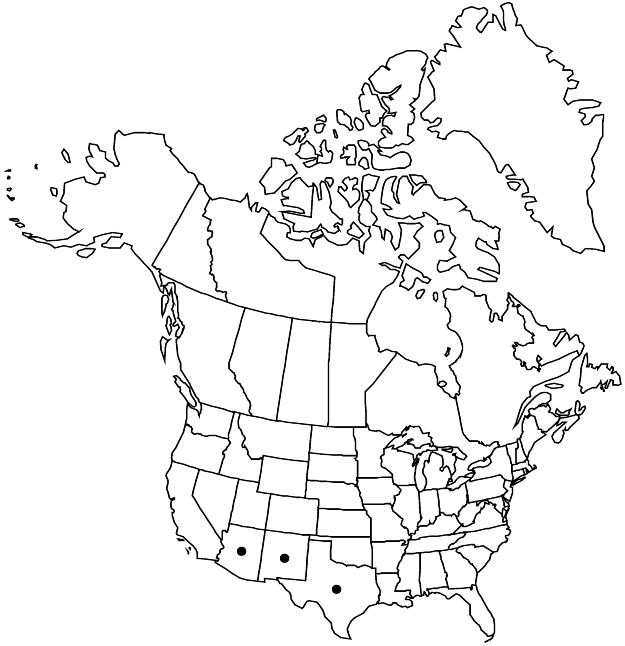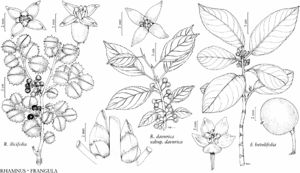Frangula betulifolia
Trudy Bot. Inst. Akad. Nauk S.S.S.R., Ser. 1, Fl. Sist. Vyssh. Rast. 8: 268. 1949.
Shrubs or small trees, 1–4 m. Stems brown to gray-brown, glabrous or pubescent. Leaves deciduous; petiole (2–) 5–16 mm; blade yellowish green abaxially, green adaxially, elliptic to oblong, elliptic-ovate or narrowly ovate, (4–) 4.5–10 x (2–) 2.5–5.5 cm, 1.6–2.6 (–2.9) times longer than wide, ± herbaceous, base obtuse to truncate or rounded, margins serrate to subcrenate, apex usually acute to obtuse, sometimes slightly acuminate, both surfaces hirtellous, glabrescent; secondary-veins (8–) 9–13 pairs. Inflorescences umbels, pedunculate, 2–20 (–38) -flowered. Pedicels 3–7 mm. Stigmas 3-lobed. Drupes black, globose, 5–10 mm; stones (2–) 3 (–4).
Phenology: Flowering Apr–Jun.
Habitat: Moist canyons, stream banks, rocky slopes, cliff bases, ledges, ridges, roadsides, deciduous, coniferous, and mixed woodlands.
Elevation: 900–2800 m.
Distribution

Ariz., N.Mex., Tex., Mexico (Chihuahua), Mexico (Coahuila), Mexico (Durango), Mexico (Nuevo León), Mexico (Sonora), Mexico (Tamaulipas)
Discussion
In the flora area, Frangula betulifolia is found in southeastern Arizona, the southern two-thirds of New Mexico, and trans-Pecos Texas. It and F. obovata are allopatric and morphologically distinct. C. B. Wolf (1938) considered a collection from Cochise County in southeastern Arizona, named as Rhamnus blumeri (Frangula ×blumeri), to be a hybrid between Frangula betulifolia and F. californica var. ursina; see the discussion of the latter taxon for more information.
Selected References
None.
